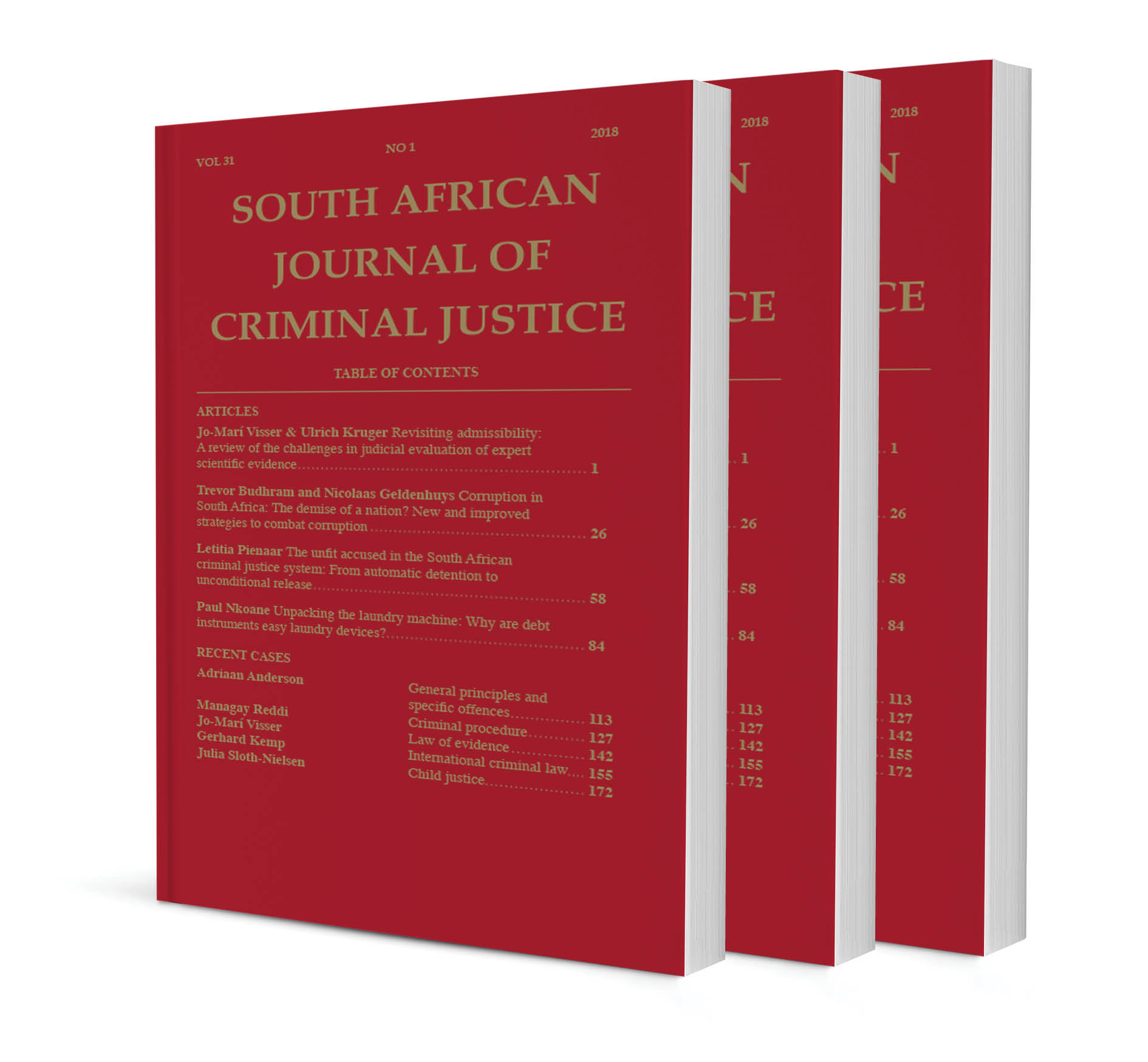Recent case: Criminal procedure

Recent case: Criminal procedure
Author Managay Reddi
ISSN: 1996-2118
Affiliations:
Source: South African Journal of Criminal Justice, Volume 33 Issue 1, p. 225 – 238
Abstract
None

ISSN: 1996-2118
Affiliations:
Source: South African Journal of Criminal Justice, Volume 33 Issue 1, p. 225 – 238
None

ISSN: 1996-2118
Affiliations:
Source: South African Journal of Criminal Justice, Volume 33 Issue 1, p. 239 – 256
None

ISSN: 1996-2118
Affiliations:
Source: South African Journal of Criminal Justice, Volume 33 Issue 1, p. 257
None

In an attempt to scrutinise the scientific, and therefore legal, value of fingerprint evidence, this article, in two parts, interrogates problems and challenges with regard to fingerprint evidence, which have been critically discussed and evaluated in six seminal international forensic reports compiled between 2006 and 2017. The incisive, authoritative and extensive reports which are examined and interrogated in this article, include a 2007 report on a review of the FBI’s handling of the Brandon Mayfield case (Mayfield Report) (consisting of 275 pages); the 2009 report compiled by the National Research Council (NAS Report) (consisting of 350 pages); the 2011 Scottish Fingerprint Inquiry Report (SFI Report) (consisting of 750 pages); the 2012 National Institute of Science and Technology Report (NIST Report) (consisting of 249 pages), the 2016 Forensic Science in Criminal Courts: Ensuring Scientific Validity of Feature-Comparison Methods Report by the President’s Council of Advisors on Science and Technology (PCAST Report) (consisting of 174 pages) and the 2017 Forensic Science Assessments: A Quality and Gap Analysis: Latent Fingerprint Examination of the American Association for the Advancement of Science (AAAS Report) (consisting of 166 pages). Part 1 of the article focusses on the Mayfield report and the NAS Report. Part 2 deals with the SFI Report, the NIST Report, the PCAST Report and the AAAS Report. Part 1 of this article summarises the recommendations of the first two reports and concludes with a short discussion of the effects of the NAS Report on case law.

In recent times, South Africa continues to witness persecution and targeted attacks on persons living with albinism. Although this group is protected under (inter)national laws, they continue to be the main casualties of ritual killings. The year 2018 marked the 70th anniversary of the Universal Declaration of Human Rights (UDHR). This instrument sets out overarching provisions for the protection of women, children and men with this condition from all forms of abuse. From a (quasi)normative perspective, it is undeniable that the UDHR has had and continues to have a great impact on South Africans with albinism (SAwA). It is, however, evident that SAwA are yet to enjoy the benefits of the UDHR since their persecution remains. Through a comparative analysis, the paper recommends that the state should adopt a proactive step to forestall violent attacks against SAwA.

National Instruction 3/20081 of the South African Police Service recognises the fact that taking children’s statements (irrespective of whether they are victims of, or witnesses to, a crime) is a challenge requiring special skills. There are thus well-documented instructions, guidelines and prescriptions for taking written statements from children who are victims of crime. The purpose of the research on which this article is based was to indicate, from the point of view of a criminal investigator, crucial aspects that are not covered in the Standing Orders2 of the South African Police Service or National Instruction 3/2008, and to support these with empirical evidence and references from the literature. Taking a witness statement from a child does not happen in a vacuum, and the investigating officer who performs this task is central to the investigation of the reported case and its successful prosecution. In this article, the authors examine and report on the requisite skills, make recommendations and identify aspects which regional court magistrates consider when evaluating children’s evidence based on their witness statements.